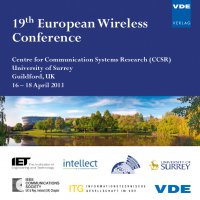Energy Efficiency Analysis for LTE Macro-Femto HetNets
Conference: European Wireless 2013 - 19th European Wireless Conference
04/16/2013 - 04/18/2013 at Guildford, UK
Proceedings: European Wireless 2013
Pages: 5Language: englishTyp: PDF
Personal VDE Members are entitled to a 10% discount on this title
Authors:
Saeed, Arsalan; Akbari, Amir; Dianati, Mehrdad; Imran, Muhammad Ali (Centre for Communication Systems Research, University of Surrey, Guildford, UK)
Abstract:
This paper presents a simulation based energy consumption analysis of a heterogeneous network (HetNet) consisting of Long Term Evolution (LTE) macro-cells and LTE femto-cells. Two potential areas of energy savings are evaluated, namely, sleep modes and spectrum assignment. Sleep modes are demonstrated with practical component level power models, resulting considerable energy savings. Three spectrum allocation scenarios are considered: A) macro and femto nodes with frequency reuse 1 (no coordination), B) macro and femto nodes with frequency reuse 2, and dedicated femto channel with reuse 1, C) reduced bandwidth macro and femto nodes with frequency reuse 2, and dedicated femto channel with reuse 1. The three mentioned scenarios are also compared against an ideal case, i.e. when nodes experience no interference. Our analysis indicate that static partitioning of spectrum is highly energy inefficient and calls for a need to develop dynamic frequency domain intercell interference coordination techniques for HetNets. Index Terms — Femto Access Points, Energy Efficiency, Evolved Packet Core.


